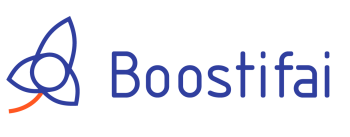Introduction to Meta Tags
What are meta tags?
Meta tags are snippets of text that provide information about a webpage to search engines and website visitors. They are placed within the HTML code of a webpage and are not visible on the actual page itself. Meta tags play a crucial role in SEO as they help search engines understand the content and purpose of a webpage. They provide concise descriptions, keywords, and other relevant information that can influence how a webpage is indexed and displayed in search engine results. By optimizing meta tags, website owners can improve their website's visibility and attract more targeted organic traffic.
Why are meta tags important for SEO?
Meta tags play a crucial role in search engine optimization (SEO) as they provide valuable information to search engines about the content of a webpage. These tags, including the title tag, meta description, and meta keywords, help search engines understand the relevance and context of a webpage's content. By optimizing meta tags with relevant keywords and concise descriptions, website owners can improve their chances of ranking higher in search engine results pages (SERPs). Additionally, well-crafted meta tags can also entice users to click on a webpage, increasing organic traffic and improving overall visibility on the web. Therefore, meta tags are an essential component of any SEO strategy, helping websites gain better visibility, attract more visitors, and ultimately improve their online presence.
Different types of meta tags
Different types of meta tags play a crucial role in optimizing a website for search engines. The first type is the meta title tag, which is displayed as the clickable headline in search engine results. It should accurately describe the content of the webpage and include relevant keywords. The second type is the meta description tag, which provides a brief summary of the webpage's content. It should be compelling, concise, and contain keywords to entice users to click on the link. Another important meta tag is the meta keywords tag, although its significance has diminished over time. It used to be a way to indicate the main keywords of a webpage, but search engines now rely more on the actual content of the page. Overall, using appropriate meta tags can enhance a website's visibility and improve its ranking in search engine results.
Title Tag
Importance of title tag in SEO
The title tag plays a crucial role in SEO as it is one of the most important on-page elements for search engine optimization. It serves as the main headline for a webpage and appears as the clickable link in search engine results. A well-optimized title tag not only helps search engines understand the content of a page but also entices users to click on the link. By including relevant keywords in the title tag, it improves the visibility and ranking of a webpage in search engine results pages (SERPs). Additionally, a concise and descriptive title tag can enhance the user experience by providing a clear indication of what the page is about. Therefore, optimizing the title tag is essential for improving organic search visibility and driving targeted traffic to a website.
Best practices for optimizing title tags
Best practices for optimizing title tags involve creating unique and descriptive titles for each webpage. It is important to include relevant keywords in the title tag to improve search engine visibility. The title should accurately reflect the content of the page and entice users to click through to your website. It is recommended to keep the title tag length within 50-60 characters to ensure it is fully displayed in search engine results. Additionally, using proper capitalization and avoiding excessive use of special characters or symbols is advisable. Regularly reviewing and updating title tags based on keyword research and user behavior can help improve the overall SEO performance of a website.
Common mistakes to avoid with title tags
Common mistakes to avoid with title tags: One common mistake to avoid with title tags is using generic or vague titles. It is important to create unique and descriptive titles that accurately reflect the content of the webpage. Another mistake is stuffing keywords into the title tag. While it is important to include relevant keywords, overusing them can result in a negative impact on SEO. Additionally, it is crucial to keep the title tag within the recommended character limit, typically around 50-60 characters, to ensure it is fully displayed in search engine results. Lastly, neglecting to update or optimize title tags for each page can hinder SEO efforts. Regularly reviewing and updating title tags based on keyword research and content changes is essential for maintaining search engine visibility.
Meta Description Tag
Significance of meta description tag
The meta description tag plays a crucial role in search engine optimization (SEO) as it provides a concise summary of the webpage's content. This tag appears in the search engine results page (SERP) below the title tag and URL, giving users a glimpse of what they can expect from the webpage. A well-crafted meta description can entice users to click on the link, increasing the website's click-through rate. Additionally, search engines often use the meta description to understand the relevance of the webpage to a user's search query. Therefore, it is essential to optimize the meta description tag by including relevant keywords and compelling information to attract both search engines and potential visitors.
Tips for writing effective meta descriptions
Tips for writing effective meta descriptions: When it comes to writing effective meta descriptions, there are a few key tips to keep in mind. Firstly, it's important to keep your meta description concise and to the point. Aim for a length of around 150-160 characters to ensure that it displays properly in search engine results. Secondly, make sure to include relevant keywords that accurately reflect the content of the page. This will help search engines understand what your page is about and improve its visibility in search results. Additionally, try to create unique and compelling meta descriptions that entice users to click on your link. By providing a clear and enticing summary of your page's content, you can increase the likelihood of attracting organic traffic. Lastly, avoid using duplicate meta descriptions across multiple pages, as this can negatively impact your SEO efforts. Taking the time to craft well-written and optimized meta descriptions can greatly enhance your website's visibility and click-through rates.
Length and formatting guidelines for meta descriptions
Length and formatting guidelines for meta descriptions play a crucial role in optimizing a website's SEO. Meta descriptions are HTML attributes that provide a brief summary of a webpage's content. It is recommended to keep meta descriptions between 50-160 characters to ensure they are concise and informative. Search engines often display meta descriptions in search results, so it is important to make them compelling and relevant to attract users to click on the webpage. Additionally, formatting guidelines such as using proper sentence structure, avoiding excessive capitalization or special characters, and incorporating relevant keywords can further enhance the effectiveness of meta descriptions in improving a website's visibility and click-through rates.
Meta Keywords Tag
Understanding the role of meta keywords tag
Understanding the role of meta keywords tag is crucial in optimizing a website for search engines. The meta keywords tag, although not as influential as it once was, still plays a role in SEO. This tag allows website owners to specify relevant keywords that are associated with the content of their web pages. Search engines used to rely heavily on this tag to determine the relevance of a webpage to a user's search query. However, due to abuse and keyword stuffing, search engines now place less emphasis on this tag. Nevertheless, it is still recommended to include a concise and relevant list of keywords in the meta keywords tag as it can provide additional context to search engines about the content of a webpage.
How to choose relevant keywords for meta tags
When it comes to choosing relevant keywords for meta tags, there are a few key factors to consider. Firstly, it is important to conduct thorough keyword research to identify the terms and phrases that are most relevant to your website or webpage. This can be done using various keyword research tools, such as Google Keyword Planner or SEMrush. Additionally, it is crucial to consider the search intent of your target audience and select keywords that align with their needs and interests. Furthermore, it is advisable to choose keywords that have a moderate search volume and low competition to increase the chances of ranking higher in search engine results. Lastly, it is essential to regularly review and update your meta tags with relevant keywords to ensure they remain effective in driving organic traffic to your website.
Debunking the myth of meta keywords tag
Debunking the myth of meta keywords tag In the world of SEO, there has been a long-standing belief that the meta keywords tag plays a crucial role in improving search engine rankings. However, this is nothing more than a myth that needs to be debunked. Search engines, such as Google, have evolved significantly over the years and no longer rely on the meta keywords tag to determine the relevance of a webpage. In fact, Google officially announced in 2009 that they do not use the meta keywords tag as a ranking factor. Instead, search engines now focus on analyzing the actual content of a webpage, including the title tag, headings, and body text, to determine its relevance to a user's search query. Therefore, it is essential for website owners and SEO professionals to shift their focus towards creating high-quality, informative content that meets the needs of their target audience, rather than wasting time and effort on optimizing the meta keywords tag.
Meta Robots Tag
Controlling search engine indexing with meta robots tag
Controlling search engine indexing with meta robots tag is an essential aspect of search engine optimization (SEO). The meta robots tag allows website owners to instruct search engine crawlers on how to index and display their web pages in search results. By using this tag, website administrators can specify whether a page should be indexed or not, whether it should follow links on the page, and whether it should display snippets in search results. This level of control enables website owners to optimize their pages for better visibility and relevance in search engine rankings. It is crucial to understand and utilize the meta robots tag effectively to ensure that search engines properly index and display the desired content from a website.
Different directives of meta robots tag
Different directives of meta robots tag play a crucial role in determining how search engines should crawl and index a webpage. The meta robots tag provides instructions to search engine bots on whether to follow or nofollow links, whether to index or noindex the page, and whether to display snippets or not. The "index" directive tells search engines to include the page in their index, while the "noindex" directive instructs them not to include it. Similarly, the "follow" directive tells bots to follow the links on the page, while the "nofollow" directive instructs them not to. Additionally, the "nosnippet" directive prevents search engines from displaying snippets of the page's content in search results. By utilizing these different directives of the meta robots tag, website owners can have more control over how their pages are crawled and indexed, ultimately influencing their SEO efforts.
Best practices for using meta robots tag
Best practices for using the meta robots tag involve optimizing your website's visibility and search engine rankings. Firstly, it is essential to understand the different values that can be assigned to the meta robots tag, such as "index", "noindex", "follow", and "nofollow". To ensure search engines index your web pages, use the "index" value. Conversely, if you want to prevent certain pages from being indexed, utilize the "noindex" value. Additionally, the "follow" value allows search engines to follow links on your page, while the "nofollow" value instructs them not to. It is crucial to carefully select the appropriate values for each page to align with your SEO goals. Regularly monitoring and updating your meta robots tag settings will help optimize your website's visibility and improve its overall search engine performance.
Other Meta Tags
Canonical tag and its impact on SEO
The canonical tag plays a crucial role in search engine optimization (SEO) by addressing the issue of duplicate content. When multiple versions of a webpage exist, search engines may struggle to determine which one to display in search results. The canonical tag helps to solve this problem by specifying the preferred version of a webpage. By using the canonical tag, website owners can ensure that search engines understand which version of a page should be indexed and ranked. This tag helps to consolidate the ranking signals and avoid dilution of SEO efforts across multiple versions of the same content. Implementing the canonical tag correctly can have a significant impact on SEO, as it helps to improve the visibility and ranking of a website in search engine results pages.
Open Graph tags for social media optimization
Open Graph tags play a crucial role in social media optimization. These tags are HTML meta tags that provide structured data to social media platforms when a webpage is shared. By including Open Graph tags in the code of a webpage, website owners can control how their content appears when shared on platforms like Facebook, Twitter, and LinkedIn. These tags allow website owners to specify the title, description, image, and other relevant information that will be displayed in social media posts. By optimizing Open Graph tags, website owners can ensure that their content stands out and attracts more engagement and clicks on social media platforms, ultimately enhancing their social media optimization efforts.
Viewport meta tag for mobile-friendly websites
The viewport meta tag is an essential element for creating mobile-friendly websites. It allows web developers to control how a webpage is displayed on different devices with varying screen sizes. By specifying the viewport width and initial scale, the viewport meta tag ensures that the website adapts and scales properly to fit the user's device. This tag is particularly crucial for optimizing user experience on mobile devices, as it enables responsive design and prevents the need for users to zoom in or scroll horizontally to view content. Implementing the viewport meta tag is a fundamental step in enhancing the mobile-friendliness of a website and improving its overall SEO performance.





